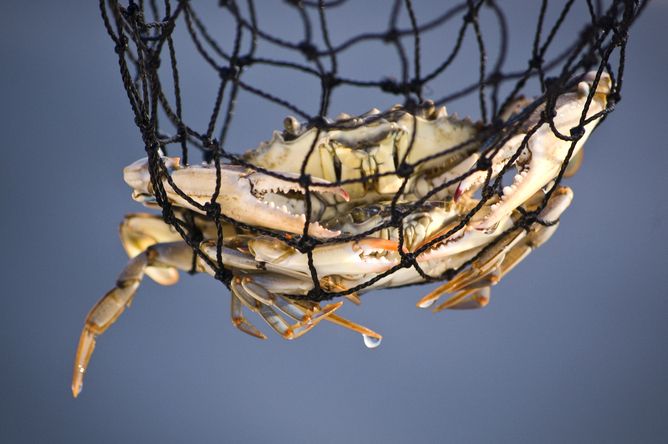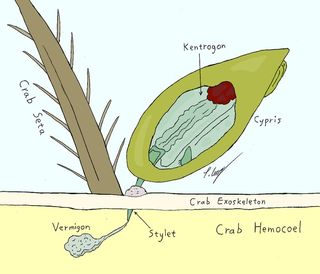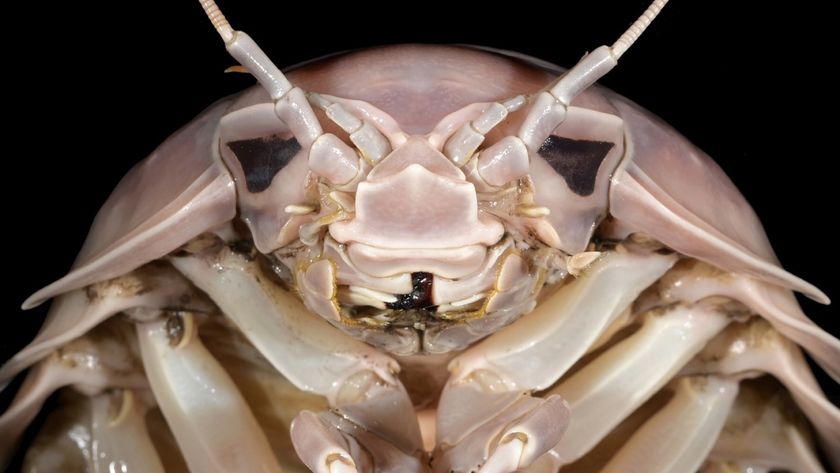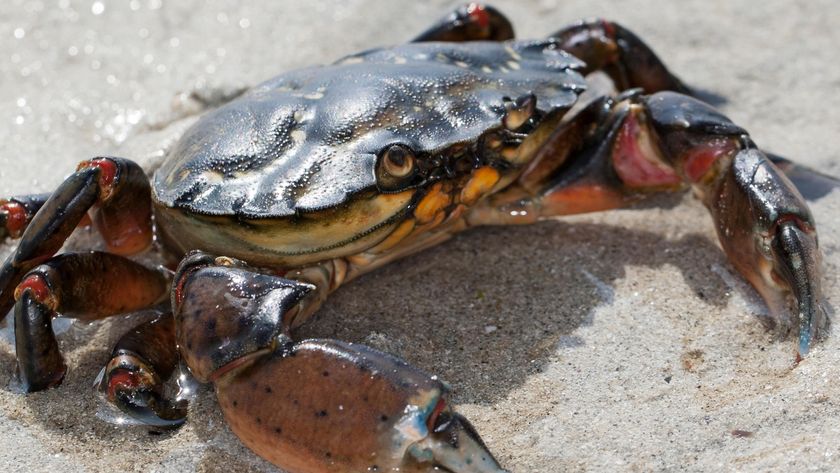
The Crab-Castrating Parasite That Zombifies Its Prey

This article was originally published at The Conversation. The publication contributed the article to Live Science's Expert Voices: Op-Ed & Insights.
Meet Sacculina carcini – a barnacle that makes a living as a real-life body-snatcher of crabs. Unlike most barnacles that are happy to simply stick themselves to a rock and filter food from the water, Sacculina and its kin have evolved to be parasitic, and they are horrifyingly good at it.
The microscopic larva of Sacculina seeks out an unsuspecting crab using specialised sensory organs. It then settles on a part of the crab where its armours is most vulnerable, usually on the membrane at the base of one of the crab’s hair (called a setae).
The larvae then transforms itself into a kind of living hypodermic syringe (called a kentrogon). This syringe stabs the base of the crab’s hair and injects the next stage of the parasite – a microscopic blob called the vermigon – into the crab’s bloodstream. This blob will eventually grow into a parasite that takes over the crab’s entire body.

The body of the fully mature Sacculina is unrecognisable as a barnacle (or any animal for that matter) – it consists of a part called the interna which looks more like the roots of a plant than any animal. Its tendrils spread throughout the crab’s insides and the only part of the parasite which is visible on the outside is the externa – the female reproductive organ which protrudes from the crab’s abdomen.
Sacculina takes over the host in both body and mind – it castrates the crab, then turns it into a doting babysitter that grooms and aerates the barnacle’s brood, tending the next generation of baby-snatchers as if they were its own babies. Lest you think Sacculina is alone in its nightmarish ways, it is just one genus in an entire order of barnacles called Rhizocephala (the “root head”).
No babies, no food
A recent study found the effects these parasites have on the host’s behaviour also affect the rest of the ecosystem. On the coast of South Carolina lives the flatback mud crab (Eurypanopeus depressus), where it is infected with a species of rhizocephalan call Loxothylacus panopei. Usually, the mud crab has an omnivorous diet and sometimes feeds on mussels, using their claws to pry open the shells. But crabs that are infected with L. panopei lose their appetite for such fare.
Sign up for the Live Science daily newsletter now
Get the world’s most fascinating discoveries delivered straight to your inbox.
When confronted with a pile of mussels, uninfected crabs treat it as an all-you-can-eat seafood buffet, and eat as much as they can without hesitation. The more mussels they are presented with, the more they eat. But no matter how many mussels you offered to crabs infected with L. panopei, they simply eat one and call it a day. The parasitised crabs also took longer to get their act together and this seems to be related to the size of the parasite – the larger the parasite has grown, the longer the crab takes to start digging into a mussel.
Based on a field survey of the estuary where the study took place, the researchers concluded that about a fifth of the crab at that location were infected with L. panopei. Given the effects that L. panopei has on a crab’s appetite for shellfish, it seems that the mussels might have an unlikely ally in the form a parasitic barnacle. The finding of this study share some parallels with a species of muscle-wasting parasite that curbs the appetite of an otherwise ravenous freshwater shrimp which has become invasive in parts of Europe and the UK.
Thus Sacculina and its kinds are more than just body-snatchers – their impact extends beyond their hosts and affects the rest of the environment. Ecosystems are compose of complex networks of biological interactions, and mediating them are the parasites which are often overlooked or ignored. But their effects on the ecosystem are certainly there – if you know what to look for.
Next, read this: Good parasite, bad parasite: nature has a job for everyone
Tommy Leung blogs at http://dailyparasite.blogspot.co.uk/
This article was originally published on The Conversation. Read the original article. Follow all of the Expert Voices issues and debates — and become part of the discussion — on Facebook, Twitter and Google +. The views expressed are those of the author and do not necessarily reflect the views of the publisher. This version of the article was originally published on Live Science.



